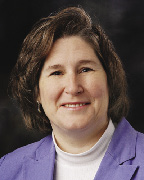With the continued interest in Smart Growth or Responsible Growth (depending on which state or state office you use as a starting point), a very old idea has become even more important for the future. Smart Growth seeks to limit development, and therefore density, to the center cores of villages, towns, and cities to preserve land for habitat, agriculture, recreation, water supply and other needs for the community as a whole. This development pattern then requires that the smaller scale needs of individuals - for beauty, companionship, play, and a sense of connection - be addressed for more people in a smaller area.
For example - Bryant Park in NYC serves the needs of residents immediately fronting it as well as providing diverse uses (restaurants, access to the library, a green lawn and a cool green place to sit) to other NYC residents (like the skating rink) and visitors. As our land in the northeast becomes increasingly designated for housing, retail, corporate parks or natural (but inaccessible) protected land, parks or play areas - there is more need for, and pressure to, create designed public spaces for people to congregate, enjoy the day, talk, play, hangout and participate in a variety of events. According to the Metropolitan Planning Council of Chicago, "Placemaking is both an overarching idea and a hands-on tool for improving a neighborhood, city or region. It has the potential to be one of the most transformative ideas of the century."
An important idea for this century certainly, but I think the idea is as old as Rome, Paris, London and even the design for the Town Green in New Haven. In each of these cities, places were created which served both lofty and simple purposes from the creation of identity, a focal point, a place to congregate; to a source of water, a green respite, a place to speak your mind or a place to hold animals.
Rome has the Piazza Navona and the Campodoglio. Paris has the Place de Voges, the Luxembourg Palace and, my favorite, the Parc des Buttes-Chaumont. London has Trafalgar Square and Piccadilly Circus. Our own New Haven Green has historically been identified as an important Public Square which continues to hold its importance for the people of New Haven today.
These historic squares and spaces have been the inspiration for new places such as Rockefeller Plaza in NYC, Millennium Park in Chicago (home of the "Bean" and the Crown Fountain - the one with the faces). These new plazas use a combination of good design, an interesting focal point, connectivity to other places, and a solid understanding of how people move to and through the spaces to establish extraordinary new places in their cities and neighborhoods.
The Project for Public Spaces, Inc. provides guidelines and a process for placemaking which can provide a start to understand what placemaking is about but a landscape architect is probably your best resource. Each new place is intended to be unique and reflect the needs and uses of the people who will use it so there is no "template" to apply to every situation.
So, what does this idea have to do with your shopping plaza, office building, or condominium? Over the last 10 years we have seen a steady increase in the number of clients looking to add "life" into their project whether it is new development or an existing project. The addition is to create something that provides for a sense of place even at the smallest scale. Sometimes this is a marketing issue to distinguish one project from its competitors. But usually it comes from the demands of the users for something more, something undefined that gives a sense of completion to the project.
Shopping Plazas are being pressured to have plantings and amenities like the lifestyle centers to keep tenants and shoppers. Office buildings are once again adding outdoor places for lunch breaks and fitness rooms and trails to encourage employees in a wellness program. Condominiums are trying to redesign usable public spaces for use by all to encourage sense of general ownership to reduce apathy or, worse, chronic vandalism.
Placemaking tries to improve quality of life from the smallest scale. More than 40 years ago, William Whyte discovered that "there is generally more smiling, kissing, embracing, holding and shaking of hands and so forth in good places" (paraphrased). In the days ahead, we could all use more smiles in our day!
Terri-Ann Hahn, ASLA, CPESC, CPSWQ, LEED AP is a principal of LADA, P.C. - Land Planners, Simsbury, Conn.
Tags:
Placemaking, an old idea that's new again, tries to improve the quality of life from the smallest scale
March 17, 2011 - Connecticut









